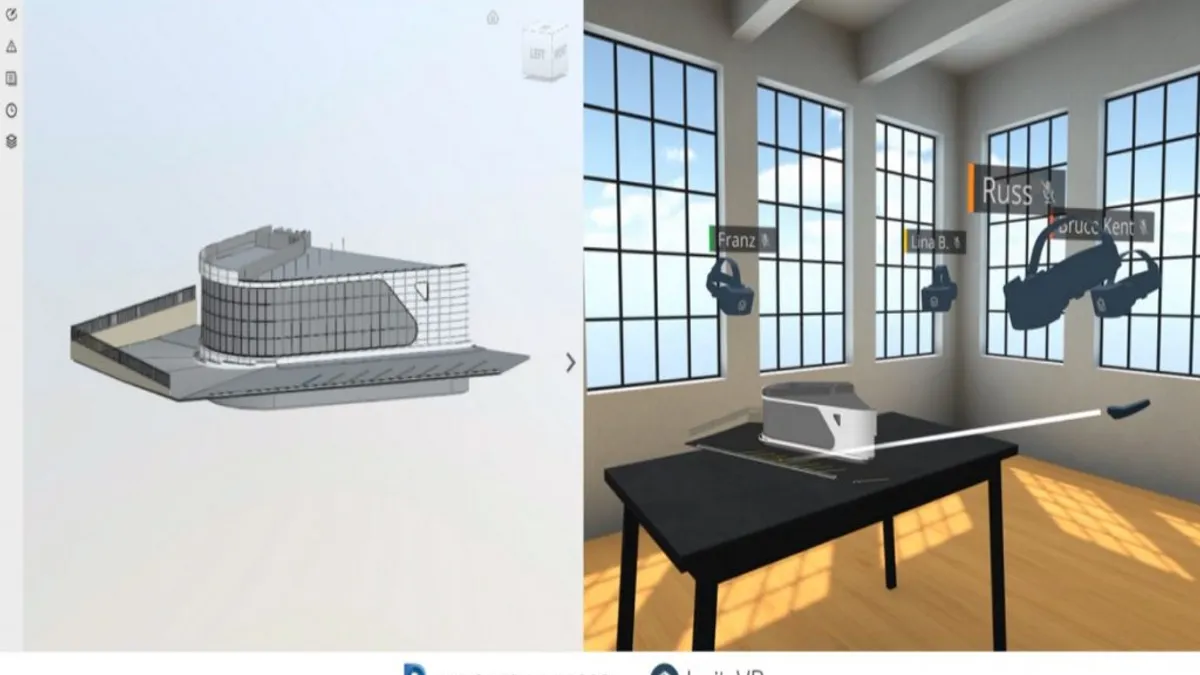Dive Brief:
- InsiteVR, a virtual reality software program that allows AEC professionals to collaborate on immersive models, last week announced an integration with BIM 360, Autodesk's construction management platform.
- InsiteVR users can organize constructability reviews and other meetings to view models on a VR headset or desktop, without the need for screen share or physical mockups and with a higher level of accuracy in catching errors, the company says.
- BIM 360 currently offers U.S. users 55 integrations powered by Autodesk Forge, a toolkit that gives developers access to APIs and allows them to stream their data to the application.
Dive Insight:
Autodesk has been actively building partnerships with construction technology platforms in recent months, a strategy that CEO Andrew Anagnost told Construction Dive earlier this year is aimed at helping its customers "continue to move forward on their digital journey.
"I think this digitization wave is here to stay," he said. "The technology's ready, the products are ready and the customers are ready — 10 years ago, that wasn't the case."
The company is looking to create a hub in BIM 360 that will allow its users to organize every aspect of project execution. It closed in on jobsite management with its $875 million acquisition of PlanGrid, which was completed in December. It extended bid management to Autodesk users with its subsequent $275 million acquisition of BuildingConnected, which closed in January.
That's it for construction software acquisitions for now, said Anagnost, but Autodesk Forge continues to be another option for pairing platforms with BIM 360.
As the AEC industry continues to move away from 2D documents and to implement BIM across more processes, virtual reality and augmented reality tools can help stakeholders extract the most benefits from 3D modeling. VR visualization programs like Revit Live, Enscape, InsiteVR, IrisVR and more allow a user to "inhabit the design, move around inside it, and feel like you are there," to detect design errors as if they were seen from the field, but well ahead of construction, wrote VR engineer Jeff Jacobson and Thornton Tomasetti CIO Jim Dray in a Construction Dive op-ed last year.
While BIM-based approaches are more effective at clash detection than relying on standard design documents, they said, they still leave risk gaps that VR and AR can fill. InsiteVR and IrisVR, for example, allow contributors from any location to occupy the same virtual space and collaborate in a meeting. Field workers wearing AR glasses can annotate a model with questions or requests for information based on the model that they see overlaid on a partially built structure. Some use cases are still premature, said the columnists, but because of the "huge value in cost avoidance" they provide, AR and VR tools will be "routinely applied" within a few years.












